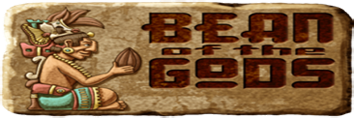|
The History of ChocolateIn fact, for the ancient Mesoamericans, chocolate was more than just a favored health food. It also played an important role in their religion, society and economy. Archaeological evidence indicates that over time, cacao-based foods became such an important part of their living that they perfected the growing and harvesting of the bean. Other evidence shows that cacao was involved in Mayan celebrations, including marriages and religious ceremonies. This drink was particularly favored by the royalty and religious leaders. The history of chocolate shows that numerous ancient glyphs and Mayan vessels depict this beverage being consumed by priests and royalty.
Until the 1500s, no one outside of the New World knew anything at all about chocolate, although historical records indicate that other European explorers, including Columbus, at least encountered cacao in the Americas. It wasn’t until Hernán Cortés conquered Mexico in 1521 that the Spanish began to learn about the delicious flavor of chocolate. Cortés and his men had their first taste of the beverage from the confiscated treasure stores of the Aztecs. Cortés described it as a “divine drink” that “builds up resistance and fights fatigue.” He observed that “a cup of this precious drink permits a man to walk for a whole day without food.” The history of chocolate in Europe came during the conquest of Mexico in 1521. The Spaniards discovered that mixing the bitter chocolate base with sugar and a variety of spices including cinnamon, nutmeg, allspice and the like, proved to be more suited for the European palate. Eventually, chocolate beverages gained popularity among European aristocrats and remained a status symbol for the wealthy until the chocolate candies were first mass-produced for the public in the nineteenth century. As late as the 1600s, the drink was still advertised as a health elixir in England.
Our love affair with chocolate continues today, though the sweet cocoa confections we enjoy today bear little resemblance to the bitter Mesoamerican brew. Now when you have you read about the history of chocolate, take also a chance to explore about the healthiest
Xocai Chocolate
Return from The History of Chocolate to Healthy Chocolate |







